Art Deco And Natural Diamonds—A Century Of Style
How does an art movement that began a 100 years ago still inspire and motivate the makers and creators of today? The designers who work with it and the experts who understand it, tell us why Art Deco finds its application in natural diamond jewellery.

Art Deco, that clean-line, geometric, minimalist aesthetic seen on skylines, straight-cut frocks and statement diamond necklaces, came from the ashes of World War I, when countries and their confidence had been crushed. To understand the long-lasting impact of a century-old design movement in diamond jewellery is to understand the context in which it was born. First seen in the 1920s, exemplified in the art and fashion of the times (remember the The Great Gatsby and its encapsulation of the diamond-studded excesses of the Roaring ’20s?), now the art form comes revived in the works of jewellery designers who draw from the 100-year-old movement, while giving it a 2020 spin. From Cartier’s colourful ‘Tutti Frutti’ collection to Birdhichand Ghanshyamdas’s use of natural diamonds to play with Art Deco’s colour variants, we trace the art movement’s journey in jewellery.
A Modern World
But first, a background. Exhibited in Paris in 1925, at the Exposition Internationale des Arts Décoratifs et Industriels Modernes, Art Deco, also known as the ‘style moderne’ of the Jazz Age (1920-1930) borrowed its look from the temperament of the times. “Imagine the end of the Great War; the whole world has been caught in the terrible depravity of violence and people are looking for relief, for hope amidst the debris. In the aftermath of WWI, artists and designers look for ways to discard the status quo and establish a new vision for the times,” says Ruchita Madhok, author of two books Bombay Deco: Hidden In Plain Sight and Deco By The Bay, as she paints a picture of the era.
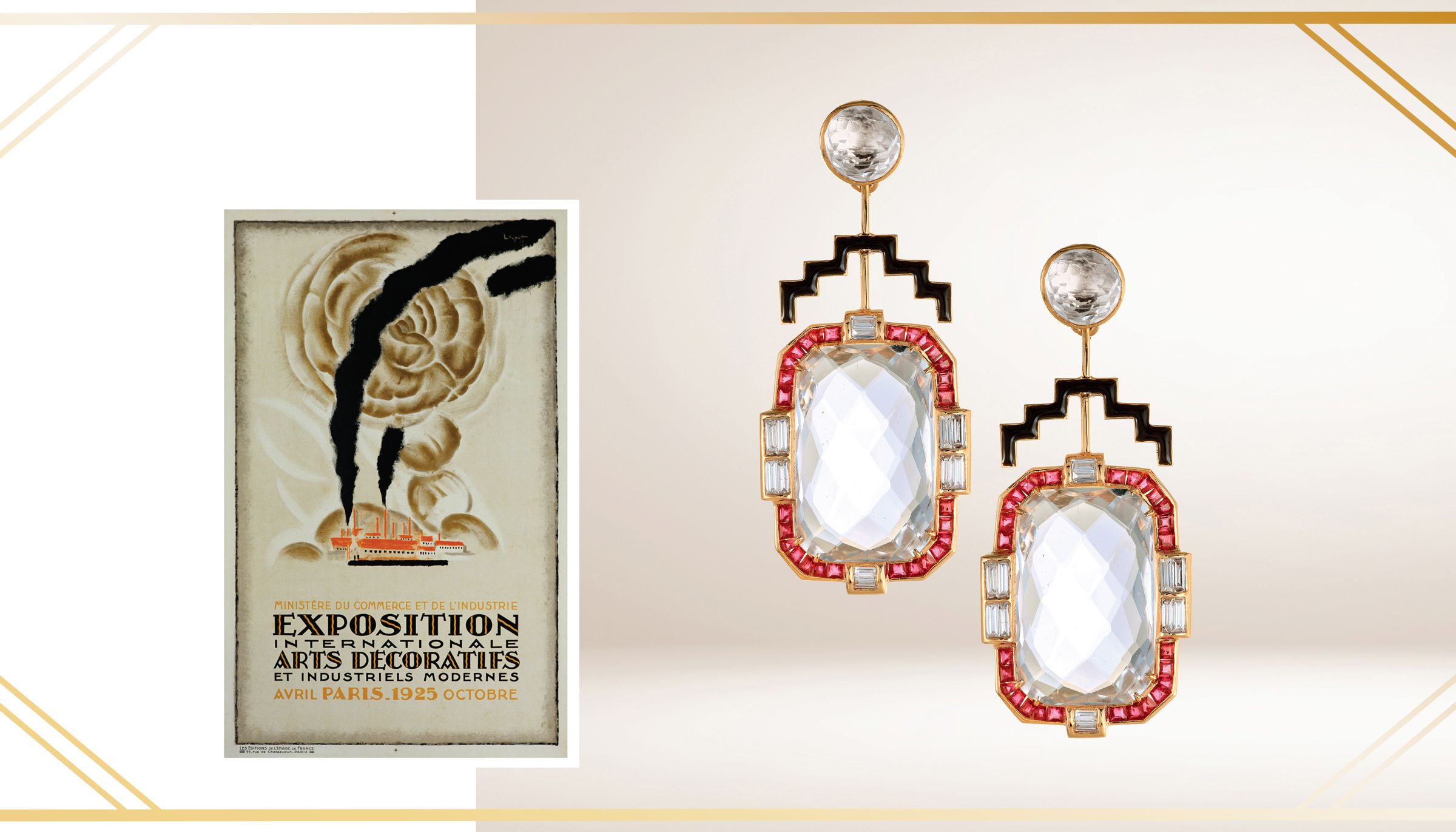
Right: Ruby, enamel and diamond earrings, Hanut Singh
Image credit: Getty Images/ Vogue India
Art Deco Revolution: Embracing Clean Lines in Jewellery Design
In jewellery, Art Deco’s effects were seen specifically in the eradicating of baroque-style swirls and swooshes for more linear structures.
Francesca Cartier Brickell, a descendant of the Cartier family and author of the book The Cartiers: The Untold Story Of The Family Behind The Jewellery Empire, exclusively tells us, “Coming out the other side of a war, attitudes and expectations irrevocably changed. Suddenly the feminine garland-style jewels of the Belle Epoque period seemed outdated: women wanted something fresher, more reflective of their newfound independence…” Around this time, Cartier Brickell’s great-grandfather, Jacques Cartier was travelling to India and left the country with his much applauded and instantly recognisable ‘Tutti Frutti’ collection.
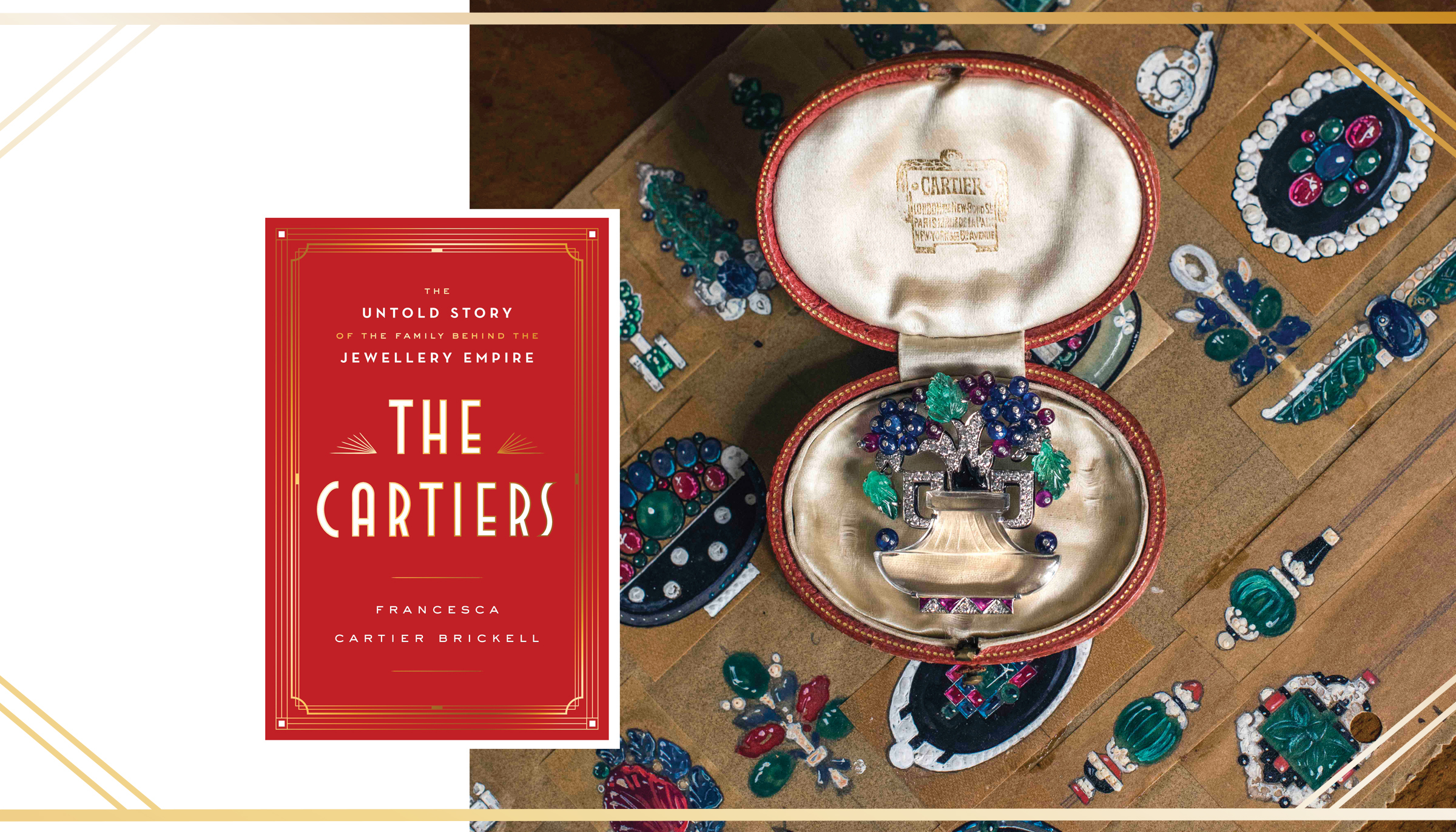
Right: Early designs of the ‘Tutti Frutti’ inspired by Jacques Cartier’s travels to India
Image credit: Courtesy Francesca Cartier Brickell
“The change in sentiment was helped by changes in gemstones: The new rectangular baguette cut of diamonds popularised in the 1920s opened up a new spectrum of possibilities when it came to the design of more linear jewels. My grandfather Jean-Jacques Cartier talked a lot about the Cartier Art Deco style – it had many elements to it: there were classic monochrome pieces – black onyx and white natural diamond brooches, or a simple diamond bandeau, but also more bold expressions of Art Deco, like the India-inspired Tutti Frutti,” she continues.
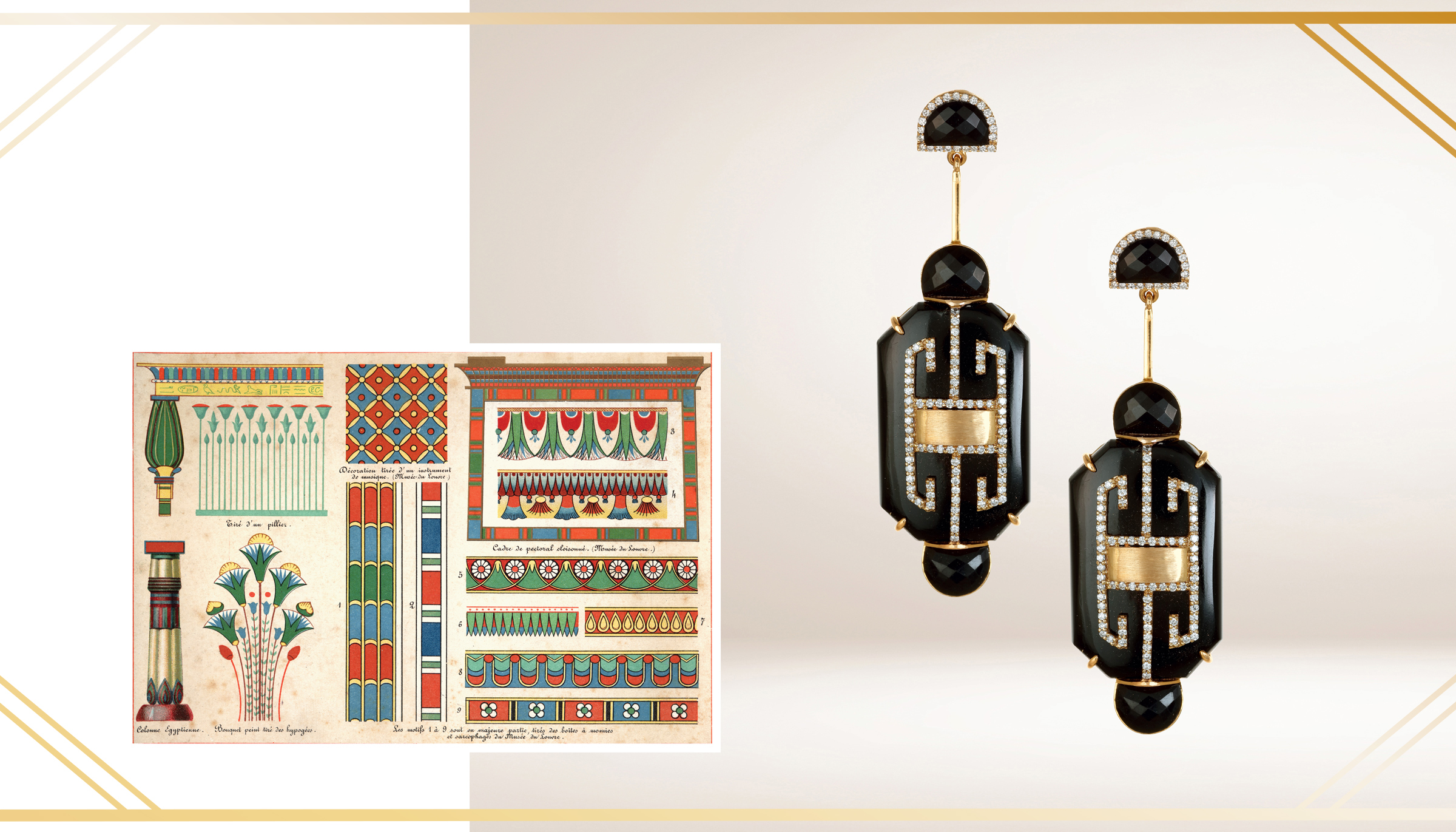
Right: Diamond, enamel and gold earrings, Hanut Singh
Image credit: Getty Images/ Vogue India
Gatsby & Co.
In F Scott Fitzgerald’s 1925 novel The Great Gatsby and its world of flappers, bootleggers, social climbers (and all that jazz), we were introduced to Art Deco jewellery, newly shorn bobs, feathers, and pearls. And when Baz Luhrmann’s motion picture iteration of the book came out in 2013, it translated the book’s excesses onto the silver screen in each sparkling frame. In the movie posters, Daisy Buchanan, played by Carrey Mulligan, wears a headpiece emblematic of the Art Deco era. The designers behind the entire jewellery collection for the film, Tiffany & Co., revealed that the inspiration behind the geometric diamond and cultured pearl headpiece with a detachable natural diamond brooch, was none other than a Native American design rendered more Art Deco for contemporary times.
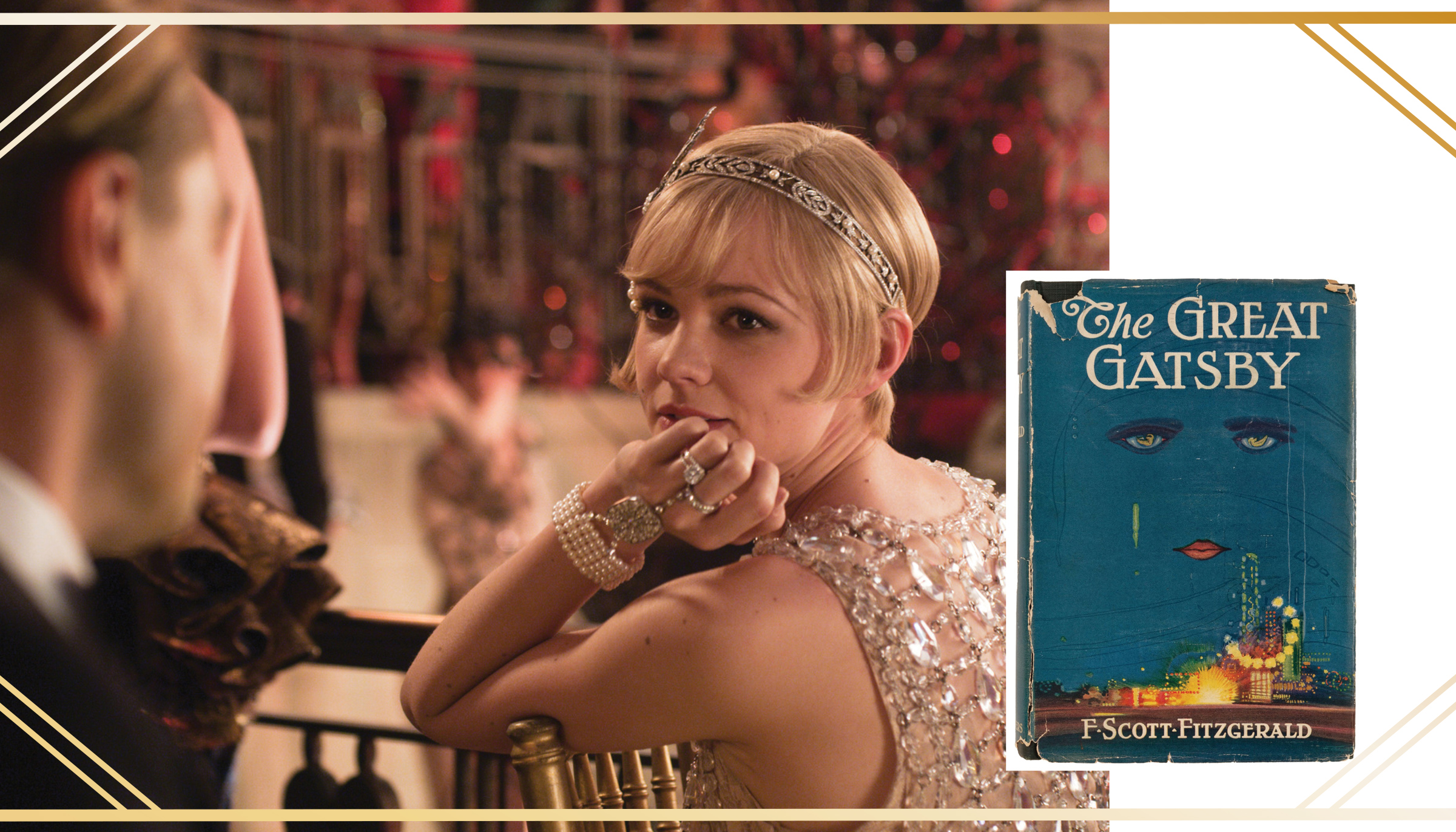
Art Deco Inspiration: Close to Home
“I love the scale, the utter modernity, the move from curves to angular lines…the detailing in design, the handsomeness and femininity of Art Deco. I am in awe of the sheer broad spectrum of the medium. It’s a gift that keeps on giving,” says Indian jewellery designer Hanut Singh of his Art Deco-inspired jewellery. What enhances and aids the creation process is “all cuts of diamonds to bring about luminosity in my modern deco work, and diamonds that brighten up any stone they are paired against, bringing the stone into prime focus. My favourite diamonds to use are baguettes and briolettes,” he explains.
Similarly, Yash Agarwal, creative director of home-grown jewellery label Birdhichand Ghanshyamdas Jewellers, explains his likeness for the bygone art form: “We’ve always liked clear and bold pieces, which is also a salient feature of Art Deco. We too, like the masters of that era, are known for our use of dark and transparent colours that are best brought out with the use of translucent diamonds juxtaposed with emeralds, sapphires and rubies.”
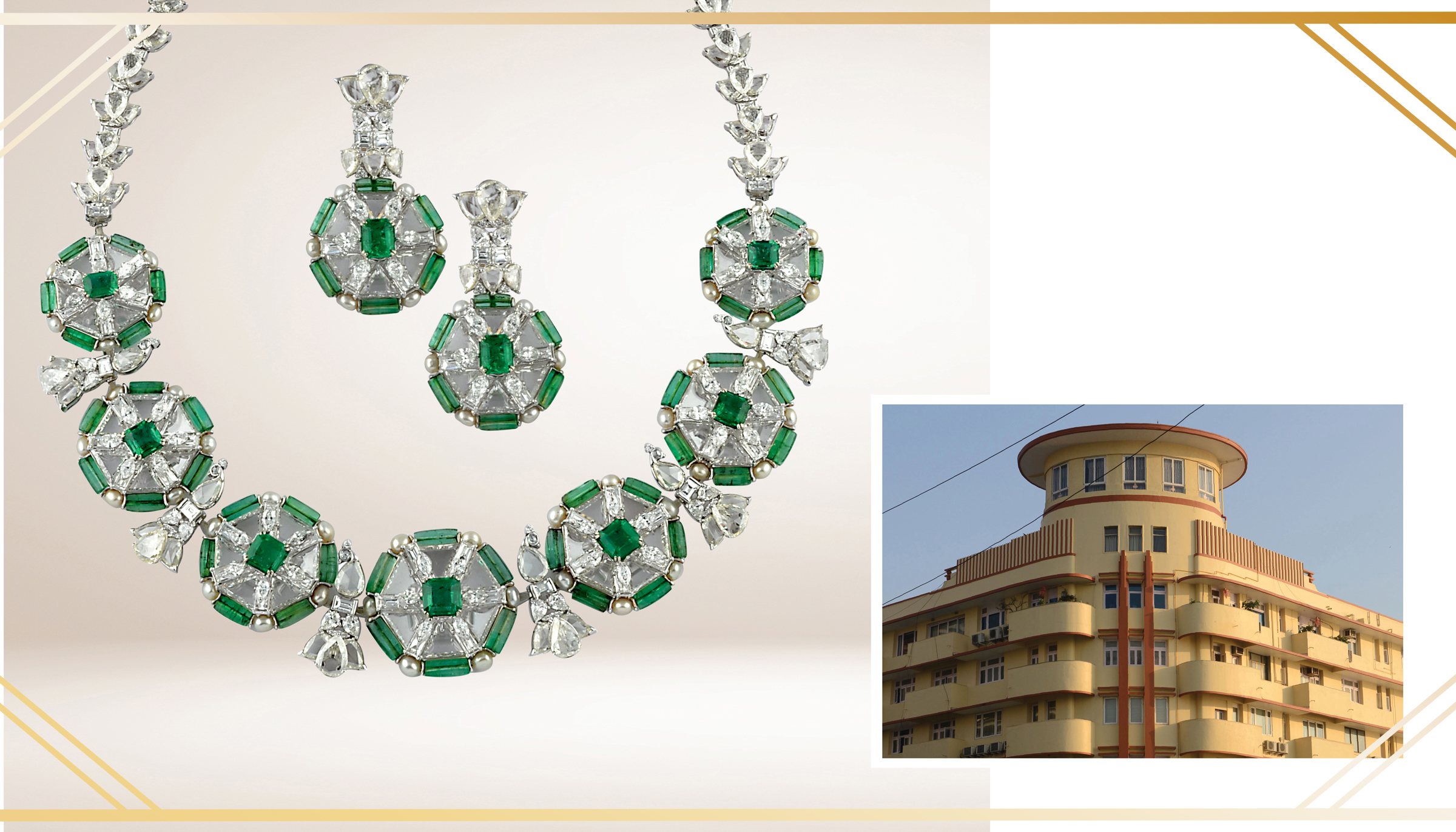
Right: An Art Deco building on Mumbai’s Marine Drive with typical linear and geometric features of Art Deco
Image credit: Getty Images/ Vogue India
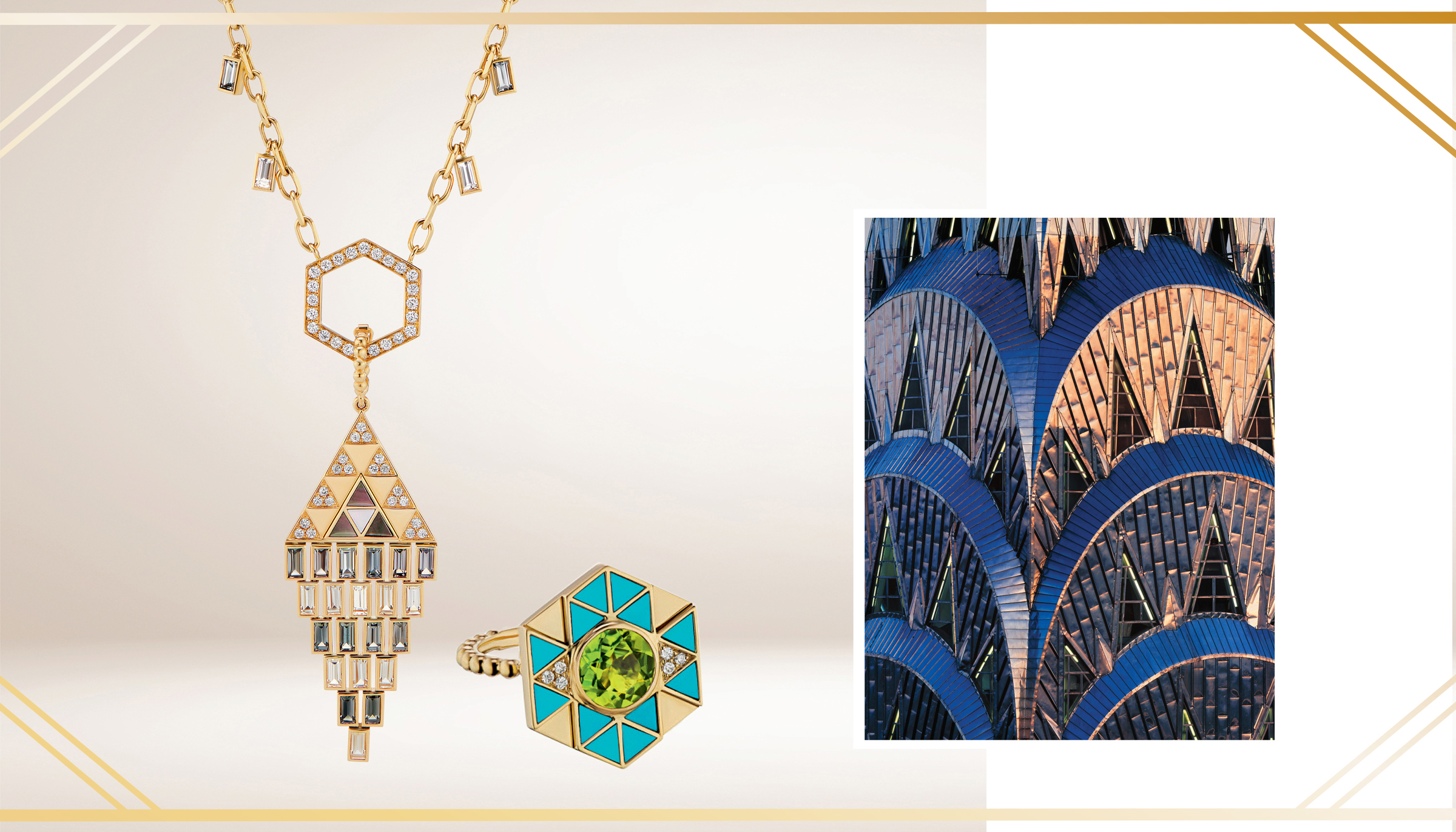
Right: An Art Deco building on Mumbai’s Marine Drive with typical linear and geometric features of Art Deco
Image credit: Getty Images/ Vogue India
New and Improved: Art Deco Revival in Modern Jewellery
California-based designer Lauren Harwell Godfrey is inspired by the patterns and symbols of ancient Egypt, coincidentally also a recurring reference in Art Deco. Her signature ‘Evil Eye’ ring (made in 18K gold and assembled with diamond pavé, turquoise enamel inlay and period) has all the markers of an Art Deco piece: it is streamlined, layered, and complicated, all by design.
The allure of Art Deco and its percolation into films, fashion, architecture and art is to acknowledge that it was a movement inspired by the everyday, and hence, applied to everything. Especially jewellery design, where all the tropes of Art Deco came together. As Francesca Cartier Brickell sums it up, “As modern paintings veered away from impressionism toward cubism, and corsets made way for Chanel’s boyish fashions, so jewellery’s creations migrated away from the romantic flowing style toward more geometric Art Deco shapes.”
